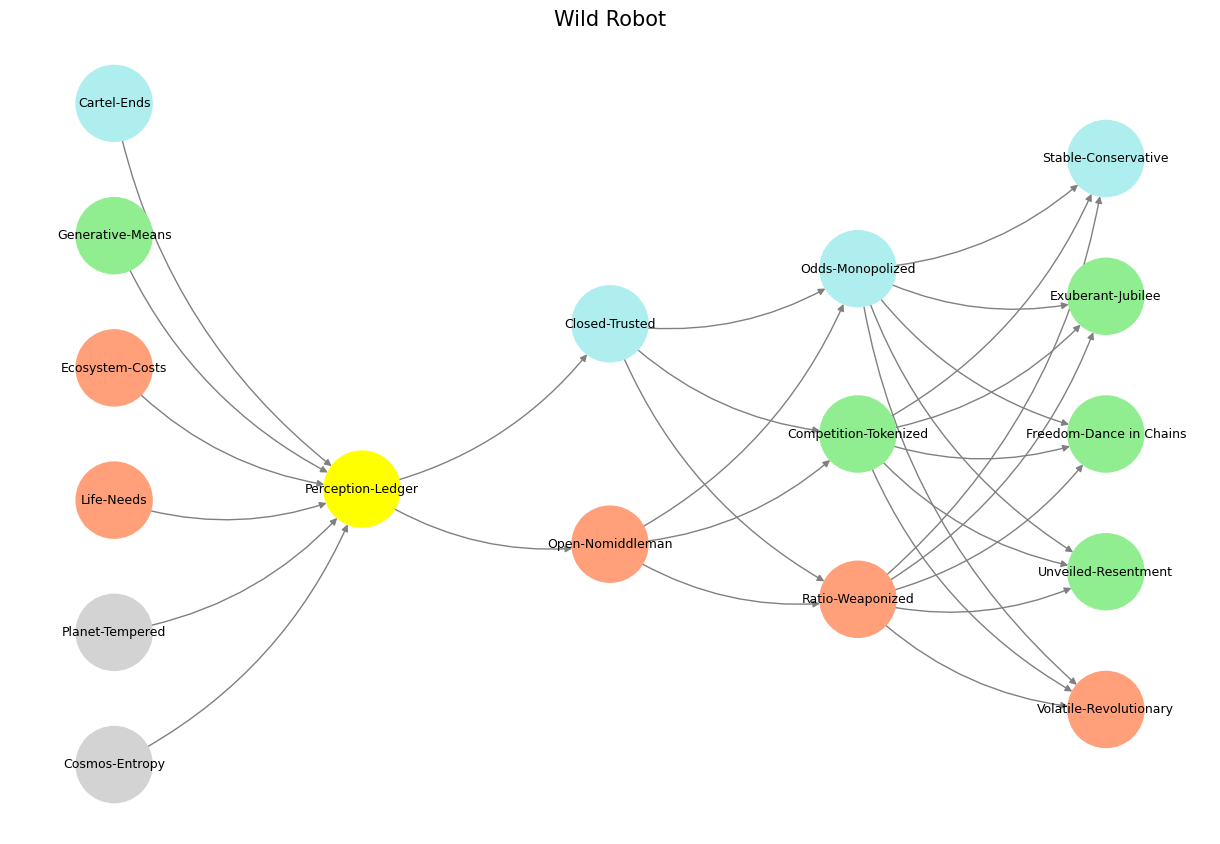Life ⚓️#
King Lear and the Strategic Bequest Motive: A Tragic Misalignment of Intent and Execution
Shakespeare’s King Lear can be interpreted as a profound exploration of the strategic bequest motive, a concept rooted in using the promise of inheritance to influence or control the behavior of heirs. This dynamic is woven into the play’s fabric, revealing the devastating consequences of misjudged intent, flawed execution, and human frailty. At its core, the tragedy of King Lear is not just the personal downfall of a king but a cautionary tale about the perils of conflating material inheritance with emotional validation.

Fig. 4 Strategic Ambiguity. The Red Queen presents rather fascinating scenarios to us.#
Conditional Love as Currency#
Lear’s division of his kingdom is emblematic of the strategic bequest motive. He leverages his wealth and power to elicit professions of love from his daughters, effectively transforming conditional affection into currency. The scene where he demands that Goneril, Regan, and Cordelia compete in declarations of filial devotion epitomizes this strategy. Goneril and Regan, astutely recognizing the transactional nature of their father’s demand, manipulate Lear with grandiose, insincere flattery. Their hollow affirmations secure their shares of the kingdom, revealing their mastery of the strategic game Lear has initiated.
In contrast, Cordelia refuses to participate in this performative charade. Her honest and restrained declaration, “I love your majesty according to my bond; no more nor less,” is anathema to Lear’s vanity and emotional neediness. As a result, he disinherits her, mistaking her sincerity for ingratitude. This decision underscores the inherent flaw in Lear’s strategic approach: his inability to distinguish between authentic love and opportunistic manipulation.
Cordelia’s Disinheritance: A Fatal Misstep#
Cordelia’s exclusion from the bequest illustrates a critical failure in Lear’s judgment. Her refusal to indulge her father’s vanity is not a rejection of his love but an assertion of her integrity. In disinheriting her, Lear alienates the one daughter who genuinely cares for him. Cordelia’s steadfast loyalty ultimately contrasts sharply with the treachery of her sisters, serving as a poignant reminder of the dangers of equating love with transactional gain. Lear’s eventual recognition of her sincerity comes too late, her death serving as the final, bitter punctuation to his strategic miscalculations.
Gloucester’s Parallel Tragedy#
The subplot involving Gloucester mirrors Lear’s journey, further emphasizing the dangers of misplaced trust in heirs. Gloucester’s “bequest” is not land or wealth but trust, which he bestows upon his illegitimate son Edmund. Like Goneril and Regan, Edmund exploits his father’s blindness—both literal and figurative—to advance his own interests. Gloucester’s fate, like Lear’s, underscores the vulnerability inherent in strategic bequests when beneficiaries are motivated by self-interest rather than genuine loyalty.
Emotional Currency and the Human Dimension#
What sets Lear’s strategic bequest apart from purely economic interpretations is its deeply emotional undercurrent. For Lear, the kingdom is not merely a material inheritance but a symbolic vessel for his need for validation as a father and king. This emotional dimension intensifies the tragedy, as it exposes the fragility of motivations rooted in vanity and insecurity. Lear’s desire to quantify love and loyalty leads not to fulfillment but to betrayal and despair, as his strategy backfires spectacularly.
A Critique of the Strategic Bequest Motive#
Ultimately, King Lear serves as a scathing critique of the strategic bequest motive. Shakespeare reveals its inherent vulnerabilities: the ease with which it can be exploited by opportunistic heirs, the misjudgments of character it often entails, and the corrosive effects it has on genuine human relationships. By tying familial bonds to material inheritance, Lear inadvertently destroys the very connections he seeks to strengthen. The chaos and suffering that ensue are not merely personal but societal, as the disintegration of Lear’s family mirrors the collapse of the kingdom itself.
Conclusion#
Through the lens of the strategic bequest motive, King Lear emerges as a powerful exploration of the human tendency to conflate material wealth with emotional ties. Lear’s tragic downfall illustrates the perils of conditional love, the fragility of strategies based on vanity, and the enduring truth that loyalty and affection cannot be coerced or commodified. By the play’s end, Lear’s realization of this truth comes too late, his kingdom and family left in ruins—a poignant testament to the dangers of strategic misalignment and human frailty.
Show code cell source
import numpy as np
import matplotlib.pyplot as plt
import networkx as nx
# Define the neural network
def define_layers():
return {
'World': ['Cosmos-Entropy', 'Planet-Tempered', 'Life-Needs', 'Ecosystem-Costs', 'Generative-Means', 'Cartel-Ends', ], # Theomarchy
'Perception': ['Perception-Ledger'], # Mortals
'Agency': ['Open-Nomiddleman', 'Closed-Trusted'], # Fire
'Generative': ['Ratio-Weaponized', 'Competition-Tokenized', 'Odds-Monopolized'], # Gamification
'Physical': ['Volatile-Revolutionary', 'Unveiled-Resentment', 'Freedom-Dance in Chains', 'Exuberant-Jubilee', 'Stable-Conservative'] # Victory
}
# Assign colors to nodes
def assign_colors():
color_map = {
'yellow': ['Perception-Ledger'],
'paleturquoise': ['Cartel-Ends', 'Closed-Trusted', 'Odds-Monopolized', 'Stable-Conservative'],
'lightgreen': ['Generative-Means', 'Competition-Tokenized', 'Exuberant-Jubilee', 'Freedom-Dance in Chains', 'Unveiled-Resentment'],
'lightsalmon': [
'Life-Needs', 'Ecosystem-Costs', 'Open-Nomiddleman',
'Ratio-Weaponized', 'Volatile-Revolutionary'
],
}
return {node: color for color, nodes in color_map.items() for node in nodes}
# Calculate positions for nodes
def calculate_positions(layer, x_offset):
y_positions = np.linspace(-len(layer) / 2, len(layer) / 2, len(layer))
return [(x_offset, y) for y in y_positions]
# Create and visualize the neural network graph
def visualize_nn():
layers = define_layers()
colors = assign_colors()
G = nx.DiGraph()
pos = {}
node_colors = []
# Add nodes and assign positions
for i, (layer_name, nodes) in enumerate(layers.items()):
positions = calculate_positions(nodes, x_offset=i * 2)
for node, position in zip(nodes, positions):
G.add_node(node, layer=layer_name)
pos[node] = position
node_colors.append(colors.get(node, 'lightgray'))
# Add edges (automated for consecutive layers)
layer_names = list(layers.keys())
for i in range(len(layer_names) - 1):
source_layer, target_layer = layer_names[i], layer_names[i + 1]
for source in layers[source_layer]:
for target in layers[target_layer]:
G.add_edge(source, target)
# Draw the graph
plt.figure(figsize=(12, 8))
nx.draw(
G, pos, with_labels=True, node_color=node_colors, edge_color='gray',
node_size=3000, font_size=9, connectionstyle="arc3,rad=0.2"
)
plt.title("Wild Robot", fontsize=15)
plt.show()
# Run the visualization
visualize_nn()


Fig. 5 How now, how now? What say the citizens? Now, by the holy mother of our Lord, The citizens are mum, say not a word.#

